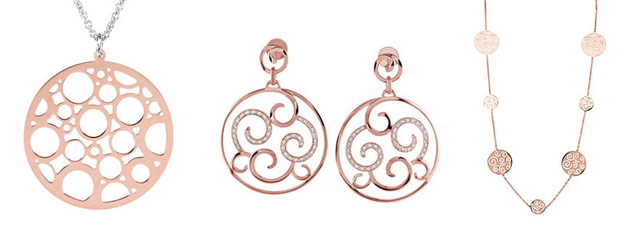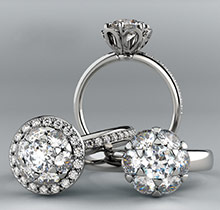When most people think of metals for jewelry, they think of yellow gold, platinum, and white gold. But one less traditional option that provides stunning results is rose gold. Originally called Russian gold, rose gold originated in Russia in the 19th century. It gained international acceptance in the 1920s when Cartier introduced the famous trinity band, featuring intertwining bands of white, yellow, and rose gold. The popularity of rose gold peaked in the 1930s and 40s, but has recently made a major comeback.
Rose gold can currently be seen in everything from fashion jewelry to high-end fine jewelry. The feminine, romantic feel provided by rose gold makes it a popular choice for engagement and wedding rings. But it is far from exclusive to bridal jewelry. Rose gold is being used to create all types of exquisite jewelry pieces, including earrings, pendants, necklaces, bracelets, rings, and watches. Rose gold has even found its way into men’s jewelry, primarily in watches and wedding bands.
One reason for rose gold’s popularity is its versatility. Rose gold is universally flattering, complementing nearly all skin tones. Similarly, it complements, rather than competes with, other colors. It can be worn with virtually any color or style of clothing. Rose gold mixes well with platinum, white gold, and yellow gold. Jewelry designers love rose gold because of how it brings out the natural beauty of diamonds and colored gemstones. Rose gold focuses attention on the stones rather than the setting they are placed in.
The pink tint of rose gold is created by incorporating a higher percentage of copper alloy than in yellow gold. While rose gold is rarer than yellow or white gold, the price of rose gold is comparable to that of yellow and white gold.


